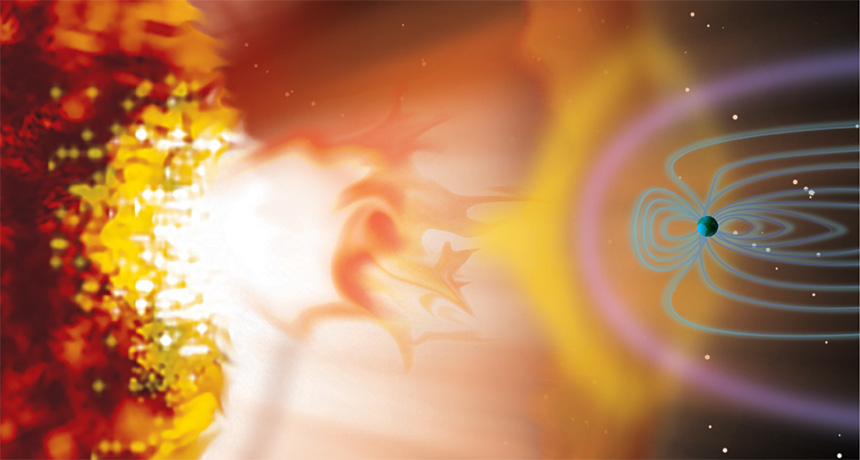Young sun’s super solar flares helped set early Earth up for life
Particle blasts could have created molecules to warm planet, seed DNA

SUPERFLARE Gusts of solar wind from the young sun produced life-supporting molecules, researchers propose. The solar flares probably compressed Earth’s magnetic field (blue lines) and sent particles raining into the atmosphere, as shown in this illustration.
Tulsi Voralia/Nature Geoscience







